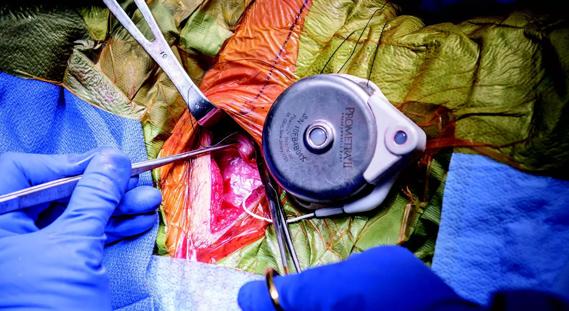How functional restoration can help children with these conditions marked by unexplained pain with stigmatized symptoms
Central sensitization syndromes occur when the malfunctioning central nervous system amplifies sensory stimuli, leading to a cluster of symptoms such as pain, fatigue, brain fog, dizziness and nausea. Although the associated conditions can be challenging to diagnose and treat, a team at Cleveland Clinic’s Center for Comprehensive Pain Recovery has improved patient outcomes using functional restoration to strengthen the body and nervous system.
Advertisement
Cleveland Clinic is a non-profit academic medical center. Advertising on our site helps support our mission. We do not endorse non-Cleveland Clinic products or services. Policy
“The sooner we can get involved and start along this functional restoration path for these patients, the better they do and the faster they get better,” says Desimir Mijatovic, MD, a pediatric and adult pain medicine specialist in the Center for Comprehensive Pain Recovery.
In the latest episode of Cleveland Clinic’s Neuro Pathways podcast, Dr. Mijatovic discusses central sensitization syndromes in children. He delves into:
Click the podcast player above to listen to the 25-minute episode now, or read on for a short edited excerpt. Check out more Neuro Pathways episodes at clevelandclinic.org/neuropodcast or wherever you get your podcasts.
This activity has been approved for AMA PRA Category 1 Credit™ and ANCC contact hours. After listening to the podcast, you can claim your credit here.
Podcast host Glen Stevens, DO, PhD: If you’re wondering whether a patient might have this type of syndrome, are there any specific symptoms or findings that will indicate they probably have it?
Dr. Mijatovic: What’s unique is the cluster of symptoms that goes along with the central sensitization. It’s not enough to just have pain. You also have to have the fatigue and brain fog and life dysfunction that comes with all these symptoms.
Advertisement
Often I can list some of the other symptoms to patients and they tell me, “Yes, I have those things as well.” They didn’t even think about those symptoms as being connected.That’s when I bring up nausea, dizziness and all these other alarm systems the body has. The patients will tell me that they have those symptoms too. If all these symptom clusters are coming together, it makes me more confident that I have a patient who has a central sensitization syndrome.
The difficult part is that patients often are told these are diagnoses of exclusion, and that can be hard because it makes them feel like something is missing or that we haven’t found the right thing yet. I think about it as more of a positive diagnosis in the sense that, yes, you have all these symptoms that are consistent with this syndrome and that makes me more confident in the treatment.
Advertisement
Advertisement

Researchers seek solutions to siloed care, missed diagnoses and limited access to trauma-informed therapies

Cleveland Clinic study investigated standard regimen

Researchers identify the neurologic evolution of pain-related learning

Tapping into motivational interviewing to guide behavioral change

Self-efficacy mindset, burst therapy and increased biofeedback may help improve outcomes

Two-hour training helps patients expand skills that return a sense of control

National Institutes of Health grant supports Cleveland Clinic study of first mechanism-guided therapy for CRPS

New technologies and tools offer hope for fuller understanding